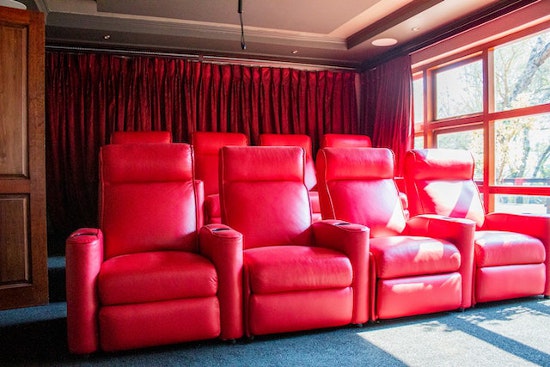If you are a movie buff, your favorite way to spend the weekend may be to watch the latest blockbuster movie. While the prospect of watching it in the theater on a large screen with surround sound can be exciting, it can be equally frustrating to manage your chores, navigate your way through the weekend traffic, and stand in lines only to find uncomfortable seats at a crowded cinema.

Thus if you have always wanted to build a home theater, this article is for you. Thanks to modern technology, you can now set up your own home theater with the audio-visual system and quality seating of your choice. This article provides a helpful guide on how you can set up a home theater and optimize it for the best viewing experience ever.
Building the Ultimate Home Theater
When building a home theater system, there are various aspects you must consider for the ultimate movie experience, regardless of which part of the house you want to use. From the right audio and visual equipment to the space, there are multiple elements that you must cater to. Here are some of the most pertinent aspects of building a home theater.
The Space
The room where you set up the home theater will affect how the audio sounds. Whether you want to use your garage, basement, spare bedroom, or living room, you must consider the room size and its acoustic quality when making your choice.
Moreover, it must be big enough to accommodate the projector or television screen and have sufficient seating space. If you want to block out any natural light, you can use blackout curtains over the windows and replicate the ambiance of a real movie theater.
Also, consider how the sound will reflect off the walls, furniture curtains, and carpets. You may want to rearrange room elements and, if the budget allows, incorporate acoustic wall treatment to absorb any excess sound waves and prevent distortion.
The Display System
The projection screen is the central point of your home theater system since it is where you will be playing and watching all the movies. If you are looking for a budgeted option, consider buying a manual pull-down screen.
The main consideration in this regard is the screen size. You must choose a screen that fits your room size and wall dimensions and is according to the theater’s seating arrangement. While the goal may be to get the biggest screen possible, it must suit other room aspects.
Besides the size, you must also consider screen placement in terms of height and distance from the seats. Ideally, the screen height must be one-third of the distance from the seats for the best viewing angle. Ensure that the wall where you install the screen does not get direct light. Also, avoid getting a high-gain model, as it may have light hotspots in the center when the screen is viewed from the sides.
Another important aspect of the display is the projector’s location. To achieve the best image quality, install it in the room’s center with no object blocking its light when reaching the screen. You must determine the screen’s aspect ratio depending on the room’s dimensions.
The Sound System
The next aspect is the sound system. Since the audio greatly impacts the movie-watching experience, you must get a high-definition surround sound system, but it must be in line with the local noise regulations.
Whether you use a 5.1 or a 7.1 surround sound, the right placement of the speakers and woofers is crucial. They must be placed in the front and behind the audience seating to achieve an immersive audio experience.
The Seating Arrangement
Even if you have the fanciest entertainment system, the experience is only complete if you have a comfortable space to sit and enjoy the film. A home theater is not like the usual living room. You must have plenty of comfortable sitting space where you can relax with your family and friends and enjoy the movie while enjoying your choice of snacks and drinks.
If you are concerned about space limitations and want everyone to have the best viewing angle, you can add curved theater seating to your home theater to make optimal use of the space without compromising the viewing experience. You can also choose the seats’ size, color, and accessories according to your unique style and preferences.
Final Thoughts
By now, you may have a fair idea of what goes into making a home theater. While it can be challenging to build a home theater, it can be equally gratifying to create a cinema experience at your home. With careful research and planning and some effort, you can make a home theater that is no less than the cinema in your neighborhood.
When planning, remember to incorporate all the vital elements that create the ultimate cinematic experience. You must not only consider getting the ideal audio and visual equipment but also focus on the space where you will be setting up the theater and its seating arrangement. This way, you can enjoy the experience to the fullest. While you’re at it, do not forget to splurge on popcorn and drinks with all the money you’re saving on movie tickets.
